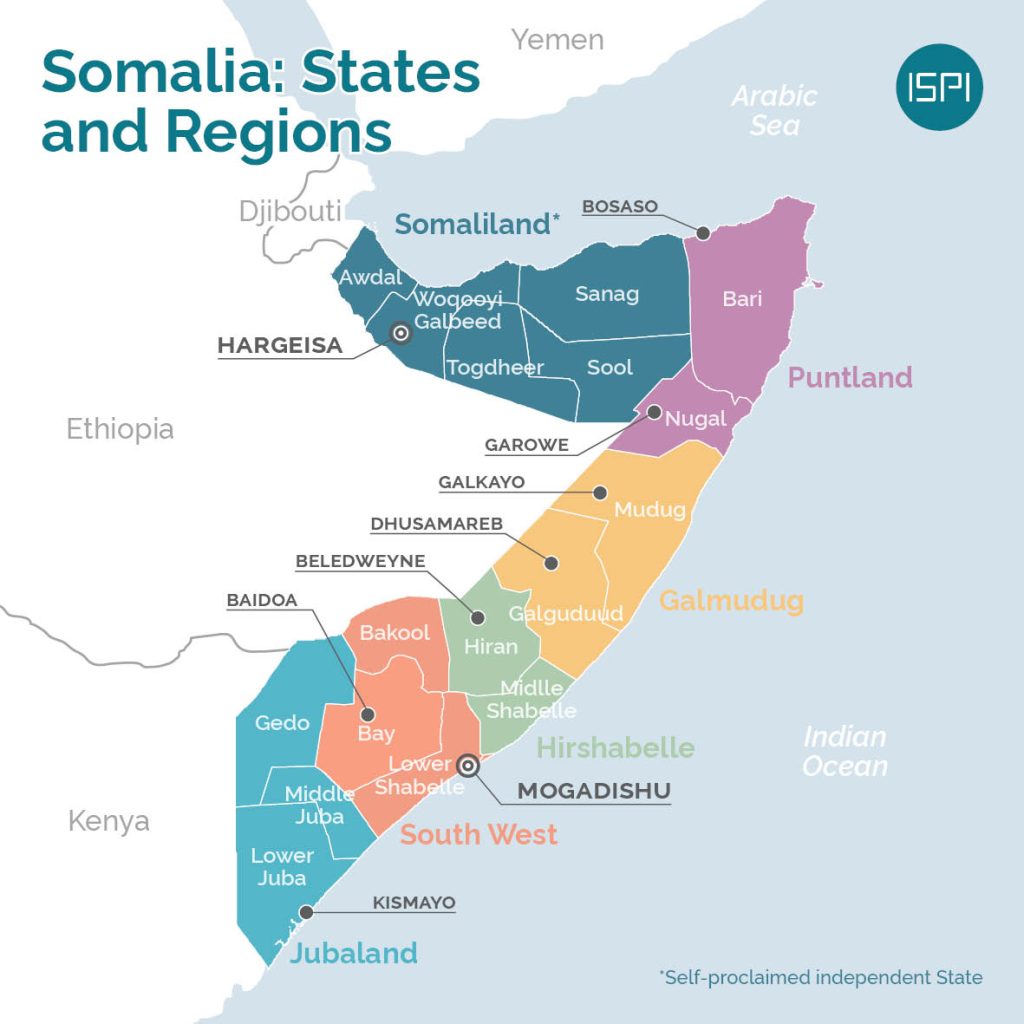The Republic of Somalia, born on July 1, 1960, from the union of the former Italian colony of Somalia and the British protectorate of Somaliland, covers an area of approximately 627,000 km² and has a population of about 17 million. Its political history is complex, marked by tribal fragmentation and clan dynamics that strongly influence its institutions. After independence, a coup in 1969 led by General Siad Barre established a military regime, which collapsed in 1991, triggering a civil war rooted in clan affiliations.
Despite international interventions, including the African Union Mission in Somalia (AMISOM) since 2007, the conflict, mainly in the south, remains unresolved. A federal republic was formed in 2012 with a provisional constitution. Although there has been progress in state-building, economic growth, and public sector management, challenges remain due to the conflicting relationship between the federal government and federal member states, underfunded budgets, corruption, and the vulnerability of some segments of the population. The country is a member of IGAD, the Arab League (since 1974), and the African Union.
the Italian Contribution
The Italian Agency for Development Cooperation (AICS) plays a significant role in the reconstruction and development of Somalia, a priority country for Italian Cooperation that has faced decades of conflict, instability, and extreme poverty. Somalia holds a strategic role for various reasons, including the pacification of the Horn of Africa, the fight against violent extremism, and addressing the impacts of the climate crisis, both environmental and socio-economic. Somalia's recent inclusion in the Heavily Indebted Poor Countries (HIPC) Initiative of the World Bank and the International Monetary Fund has opened new development prospects for the country, reinforcing the Cooperation's commitment to focus on key areas such as strengthening institutions, strategic infrastructure for reconstruction and economic development, health, agriculture, fisheries, and livestock, and the development of the private sector. Particular efforts are also dedicated to the stabilization process, through a direct support to the Federal Government of Somalia in responding to the essential needs of the population in liberated areas.
In this context, in 2023, AICS launched an ambitious initiative called “TPSS – Towards Peace and Stabilization in Somalia,” with initial funding allocated to the Office of the Prime Minister of the Federal Government to restore essential services in areas liberated from Al-Shabaab. The initiative has a bottom-up approach and supports projects proposed by local communities, selected and monitored through transparent and balanced governance to ensure real needs are met with concrete responses.
The approach of Italian Cooperation in Somalia aims to create synergies and complementarities between interventions on the multilateral and bilateral channels in the sectors of emergency, humanitarian aid, and development, involving multiple actors of the Italian system, including civil society organizations (CSOs), universities, and the private sector. The complexity of the Somali scenario and the difficulties in operating on the ground have long required the international community to intervene cohesively through multilateral instruments. Italy is part of the main mechanisms, including the UN Multi-Partner Trust Fund (UN-MPTF) and the African Development Bank's Somalia Infrastructure Fund (SIF).
Bilateral action, however, remains limited due to the extreme fragility and unreliability of security conditions. Nonetheless, the Italian cooperation is committed in Somalia also through bilateral efforts: an example is the long-standing support provided to the Somali National University (UNS), which also involves several Italian universities. This support has evolved from an initial phase of professional updating of the teaching staff to the current infrastructural support for the renovation of the Gaheyr University campus in Mogadishu.
Furthermore, humanitarian and emergency aid, mostly realized through the Italian CSOs present on the ground, is an integral part of the bilateral action of Italian Cooperation in the country.
Somalia - Strategic Documents
| Author | Title | Publication date |
|---|---|---|
| The Ministry of Planning, Investment and Economic Development | Somalia National Development Plan 2020 - 2024 | 2020 |


